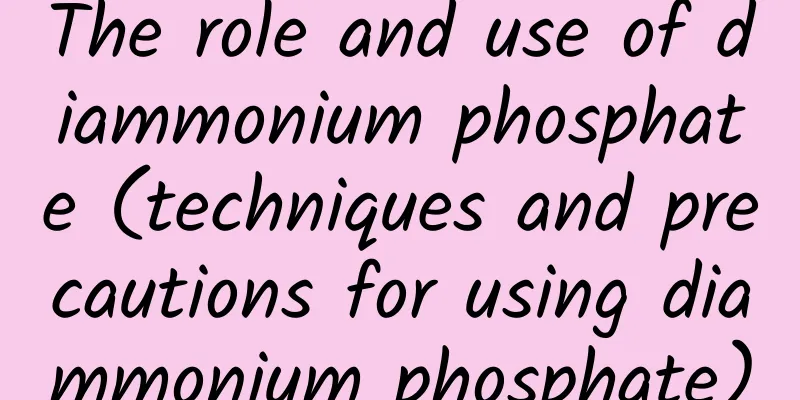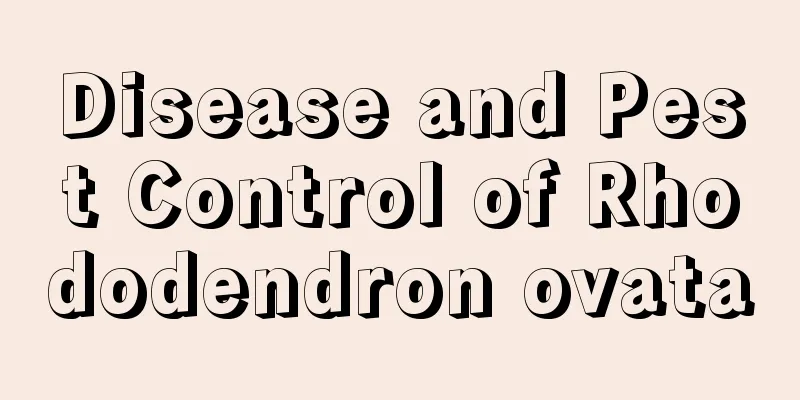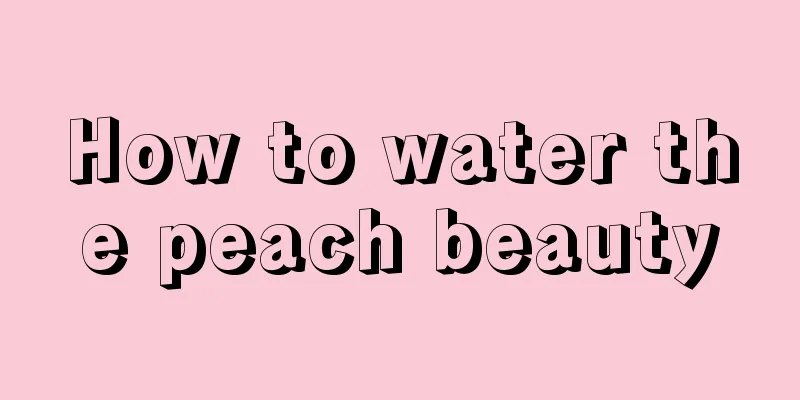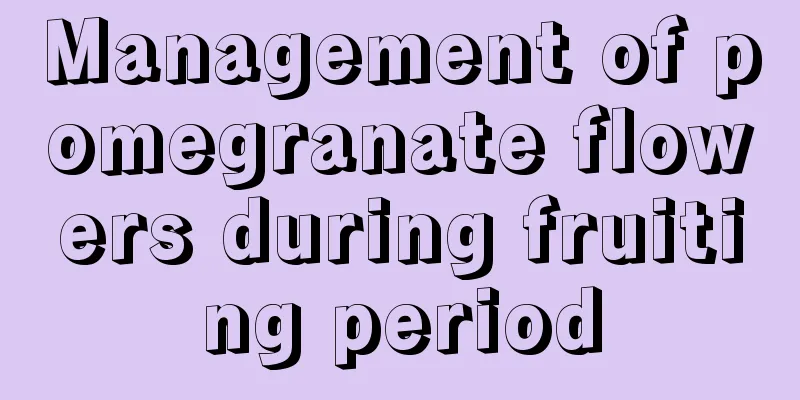The role and use of diammonium phosphate (techniques and precautions for using diammonium phosphate)

|
Diammonium phosphate is called "king fertilizer" by farmers because it contains not only 18 nitrogen but also 46 phosphorus, which can increase nitrogen and phosphorus elements in crops at the same time. Especially in the Northeast, when planting corn and soybeans, people prefer to mix diammonium phosphate with urea and potash fertilizer, and the effect is still good. However, mixed fertilizers have a disadvantage, which is that the seedlings emerge unevenly. We can see that some seedlings in the field are tall and some are short. This is mainly because urea, diammonium phosphate and potassium fertilizer in the mixed fertilizer are all separate grains. Whichever one sinks more during sowing will be planted faster, so some seedlings will be tall and some short. Moreover, another disadvantage of mixed fertilizers is that they are prone to fertilizer deficiency in the later stages, and nitrogen and potassium topdressing needs to be applied during the growing period. The monoammonium phosphate we currently use has two types of nitrogen, phosphorus and potassium content of 11-44-0 or 10-50-0. Of course, we will also make appropriate adjustments based on customer needs. What should we pay attention to when using monoammonium phosphate and diammonium phosphateDiammonium phosphate is alkaline. When applied to alkaline soil, it reacts with water to increase the alkalinity. In addition, if the calcium and magnesium content is relatively high, they will react with phosphate and be fixed by calcium ions in the soil. Another reason is that we usually use groundwater for irrigation. The water is relatively "hard" and has a high calcium ion content, which leads to a very low actual utilization efficiency of diammonium phosphate, generally at 10-25%. Therefore, it is recommended to use some compound fertilizers or monoammonium phosphate for more alkaline plots. Diammonium phosphate usage in crops, for reference only1. WheatWe now mostly use compound fertilizers when sowing wheat, or use special fertilizers for wheat. If we use diammonium phosphate as base fertilizer, it is recommended to use 40-50 catties of diammonium phosphate + 20-25 catties of potassium fertilizer per mu. During the seedling and tillering stages, it is recommended to apply 15-20 catties + 10-15 catties urea + 20 catties potassium fertilizer per mu. This can make the wheat seedlings strong, drought-resistant, lodging-resistant, increase the number of ears, and make the grains full. 2. RiceWhen we grow rice, if we use diammonium phosphate as base fertilizer, farmers are advised to use 40-50 kilograms + 20-25 kilograms of potassium fertilizer per mu. When it comes to the tillering stage, apply 10-15 catties + 10-15 catties urea + 20 catties potassium fertilizer per mu. It can effectively promote rice tillering, prevent root rot, increase the number of ears, the number of grains per ear, and the fullness of the grains. 3. CornWhen planting corn, when using diammonium phosphate as base fertilizer, it is recommended to use 35-45 catties + 20-25 catties of potassium fertilizer per mu. When it comes to the seedling stage and jointing stage, you can apply 20-25 catties + 15-20 catties of urea + 15-20 catties of potassium fertilizer. It can make corn seedlings strong, drought-resistant, lodging-resistant, increase the number of corn cobs, and make the grains full. 4. CottonWhen planting cotton, if diammonium phosphate is used as the base fertilizer, it is recommended to use 40-50 catties + 20-25 catties of potassium fertilizer per mu. At the seedling stage and bud and boll stage, 10-15 catties + 20 catties of urea + 20 catties of potassium fertilizer per mu can be applied to increase the number of bolls per cotton plant, reduce bud and boll shedding, and improve the quality of cotton fiber. 5. PeanutsWhen we plant peanuts, we recommend using 20-30 catties of diammonium phosphate + 20-25 catties of potassium fertilizer per mu. During the flowering and needle stages, apply 10-15 catties + 15-20 catties of potassium fertilizer. This can increase the number of peanut fruits per plant, strengthen the seeds, and improve the quality. 6. SoybeanWhen sowing soybeans, if you choose diammonium phosphate as the base fertilizer, it is recommended to use 30-35 catties + 20-25 catties of potassium fertilizer per mu. When it comes to the flowering and fruiting stages, you can apply 10-20 catties + 10-15 catties of potassium fertilizer, which can effectively increase the number of fruits per plant and strengthen the seeds. 7. SorghumWhen diammonium phosphate is used as base fertilizer, the recommended dosage per mu is 40-60 jin + 20-25 jin of potassium fertilizer. At the seedling stage, 20 jin of urea can be applied to strengthen sorghum seeds and increase the number of grains per ear. 8. PotatoesWhen planting potatoes, if diammonium phosphate is used as the base fertilizer, it is recommended to use 40-50 catties + appropriate amount of potassium fertilizer per mu. At the bud stage, 25 catties + appropriate amount of potassium fertilizer can be applied to make the potatoes larger and higher in starch content. 9. Melon, Fruit and VegetablesIf we use diammonium phosphate as base fertilizer when planting melons and fruits, it is recommended to use 50-60 catties + appropriate amount of potassium fertilizer per mu, and apply 20-30 catties of urea per mu in two times. It can reduce pests and diseases and increase yields. 10. Leafy vegetablesWhen we grow leafy vegetables, if we use diammonium phosphate as base fertilizer, we can use 50-60 catties + appropriate amount of potassium fertilizer, and when applying topdressing, we can apply 20-30 catties of urea + appropriate amount of potassium fertilizer twice. It can make the leaves green, the plants big and the yield high. The above content is only for reference, and the specific dosage should be combined with your own situation. Since diammonium phosphate does not contain potassium, adding potassium fertilizer in moderation will achieve better results. In addition, if you want a better taste, you can use it with farmyard manure or commercial organic fertilizer. Finally, we must separate the seeds and fertilizers when using them, and apply them deeply and partially to avoid burning buds and seedlings. |
>>: When is the best time to plant spring corn?
Recommend
Grow “3 pots” of drought-tolerant flowers at home, they can grow even without watering for a month, and maintenance is hassle-free!
1. Dragon bone flower Many people's first imp...
How to prune clematis in winter
1. Don’t prune early flowers For some clematis th...
How to make your own lucky bamboo nutrient solution
1. How to make nutrient solution yourself The fir...
Strawberry Pest Control
Strawberry pests and diseases The most common str...
How to fertilize forsythia
Fertilization method Forsythia requires a relativ...
Is okra poisonous? Who should not eat okra?
1. Is it poisonous? Okra is non-toxic. It is gene...
How to deal with the bean green after flowering
Flowering period and state of Peperomia Its flowe...
Cultivation technology of Schlumbergera, what soil to use for Schlumbergera cultivation
1. Soil preparation It likes soil with good perme...
How to grow thyme
Thyme Growing Conditions Thyme prefers warm and d...
How much is the yield of green onions per mu? How much is the profit of growing green onions per mu?
Onion yield per mu Under normal circumstances, th...
The process of bean germination
The process of bean germination Beans are common ...
How and when to plant onions in the north
Suitable planting time for northern onions The be...
Can Anthurium be watered with beer?
1. Can be poured It can be watered with beer, whi...
How to care for spring orchids in winter
Is Chunlan afraid of cold? Chunlan is not afraid ...
Cultivation methods and precautions of ice berry
1. Maintenance methods 1. Soil: When planting ice...









